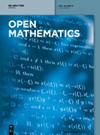A comprehensive review of the recent numerical methods for solving FPDEs
IF 0.9
4区 数学
Q1 MATHEMATICS
引用次数: 0
Abstract
Fractional partial differential equations (FPDEs) have gained significant attention in various scientific and engineering fields due to their ability to describe complex phenomena with memory and long-range interactions. Solving FPDEs analytically can be challenging, leading to a growing need for efficient numerical methods. This review article presents the recent analytical and numerical methods for solving FPDEs, where the fractional derivatives are assumed in Riemann-Liouville’s sense, Caputo’s sense, Atangana-Baleanu’s sense, and others. The primary objective of this study is to provide an overview of numerical techniques commonly used for FPDEs, focusing on appropriate choices of fractional derivatives and initial conditions. This article also briefly illustrates some FPDEs with exact solutions. It highlights various approaches utilized for solving these equations analytically and numerically, considering different fractional derivative concepts. The presented methods aim to expand the scope of analytical and numerical solutions available for time-FPDEs and improve the accuracy and efficiency of the techniques employed.最新 FPDE 数值求解方法综述
由于分数偏微分方程(FPDE)能够描述具有记忆和长程相互作用的复杂现象,因此在各个科学和工程领域都受到了极大的关注。用分析方法求解 FPDE 具有挑战性,因此对高效数值方法的需求与日俱增。这篇综述文章介绍了最近用于求解 FPDE 的分析和数值方法,其中假定的分数导数有 Riemann-Liouville 意义上的分数导数、Caputo 意义上的分数导数、Atangana-Baleanu 意义上的分数导数等。本研究的主要目的是概述 FPDE 常用的数值技术,重点是分数导数和初始条件的适当选择。本文还简要说明了一些具有精确解的 FPDE。文章重点介绍了在分析和数值求解这些方程时使用的各种方法,并考虑了不同的分数导数概念。所介绍的方法旨在扩大时间-有限差分方程的分析和数值求解范围,并提高所采用技术的精度和效率。
本文章由计算机程序翻译,如有差异,请以英文原文为准。
求助全文
约1分钟内获得全文
求助全文
来源期刊

Open Mathematics
MATHEMATICS-
CiteScore
2.40
自引率
5.90%
发文量
67
审稿时长
16 weeks
期刊介绍:
Open Mathematics - formerly Central European Journal of Mathematics
Open Mathematics is a fully peer-reviewed, open access, electronic journal that publishes significant, original and relevant works in all areas of mathematics. The journal provides the readers with free, instant, and permanent access to all content worldwide; and the authors with extensive promotion of published articles, long-time preservation, language-correction services, no space constraints and immediate publication.
Open Mathematics is listed in Thomson Reuters - Current Contents/Physical, Chemical and Earth Sciences. Our standard policy requires each paper to be reviewed by at least two Referees and the peer-review process is single-blind.
Aims and Scope
The journal aims at presenting high-impact and relevant research on topics across the full span of mathematics. Coverage includes:
 求助内容:
求助内容: 应助结果提醒方式:
应助结果提醒方式:


